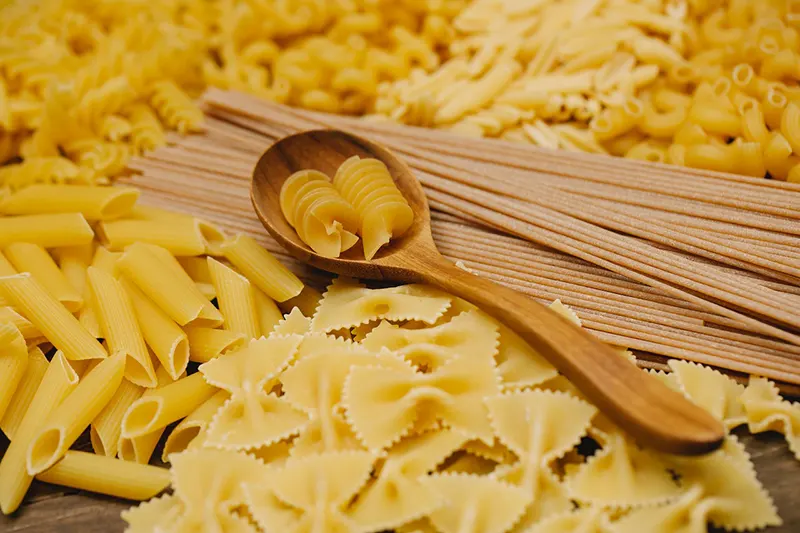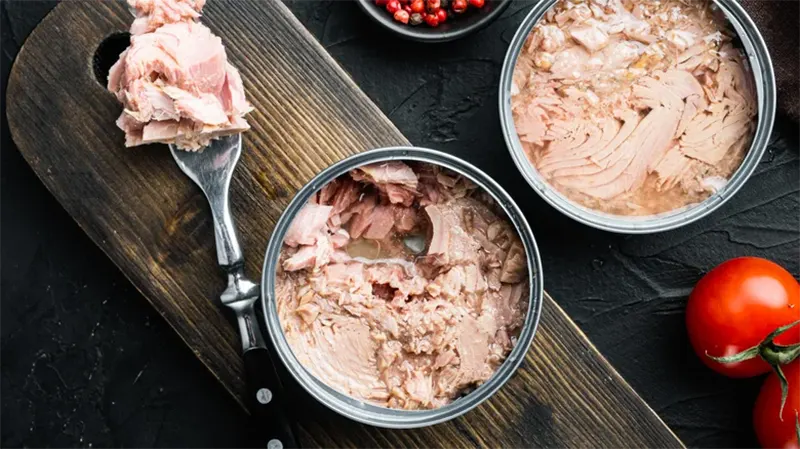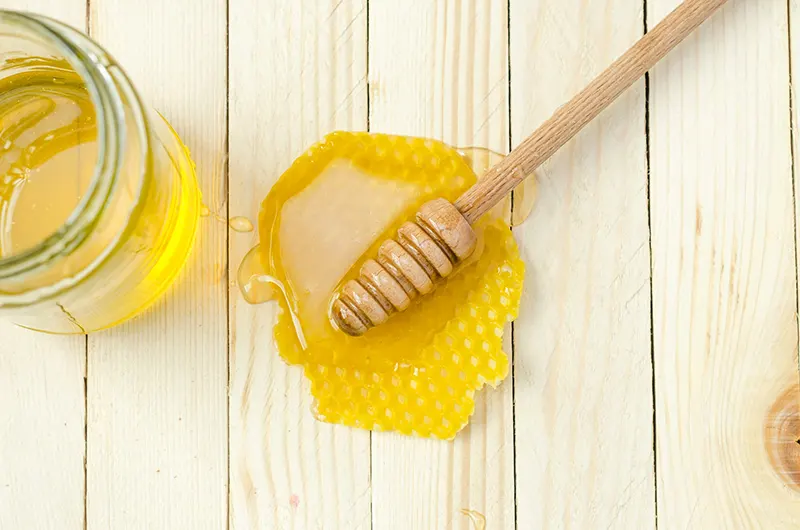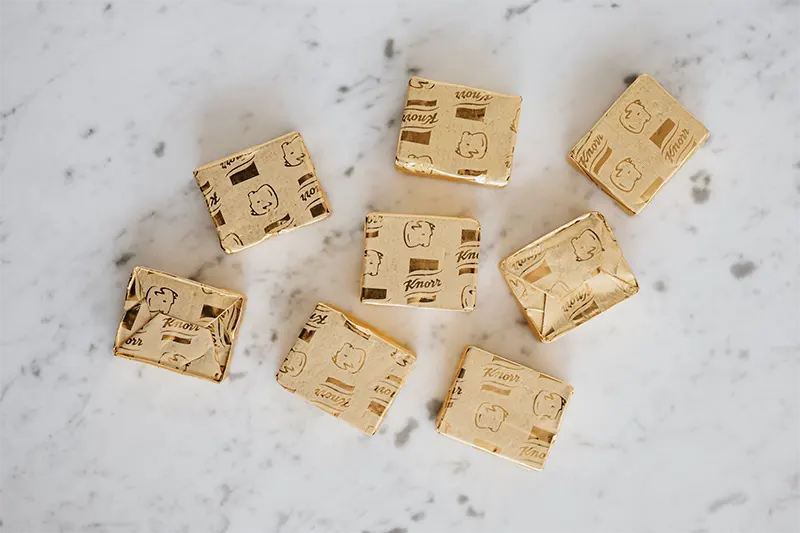Having a stable supply of foods that last forever is crucial in the world of prepping. Whether you’re a committed prepper or want to be ready for unexpected situations, knowing which foods may last the test of time is essential. Naturally, having these foods on hand for regular usage is a good idea, but they’re even more important to have when sh*t hits the fan.
Foods that last forever include canned foods like vegetables, fruits, and meats. Dried foods such as rice, beans, powdered milk, ramen noodles, and pasta can also last forever if stored properly.
From canned items to dried fruit and more, these pantry staples will provide comfort and nourishment in times of disaster.
Quick Navigation
- 20 Foods With the Longest Shelf Life
- 1. Wheat
- 2. White Rice
- 3. Dried Pasta
- 4. Ramen Noodles
- 5. Dry Beans, Legumes, and Lentils
- 6. Popcorn Kernels
- 7. Canned Food
- 8. Salted Dried Meat
- 9. Dark Chocolate
- 10. Vinegar
- 11. Salt
- 13. Powdered Milk
- 14. Honey
- 15. Pure Vanilla Extract
- 16. Maple Syrup
- 17. Corn Syrup
- 18. Soy Sauce
- 19. Bouillon Cubes
- 20. Corn Starch
- How About Beverages That Last For Decades?
- Tips on Storing Long-Lasting Foods Effectively
- Eternal Edibles: Nourishing Your Pantry with Foods That Defy Time
20 Foods With the Longest Shelf Life
If kept correctly, these 20 foods or items may last quite a while in your food storage.
1. Wheat
Due to its adaptability and extended shelf life, wheat is often seen as an excellent option for survivalist diets.
Wheat is a staple grain that contributes vital minerals, fiber, and carbs, making it a crucial supplement to a prepper’s supply. It offers versatility in meal preparation since you may keep it in various forms, including whole wheat berries, flour, or rolled oats.
Wheat is a viable option for long-term storage and is valuable for many decades under moderate temperatures, low moisture, and pest protection.
Wheat provides food and energy for uncertain times, whether for baking bread, making porridge or as an ingredient in numerous recipes.
2. White Rice
It will last forever if you keep white rice in an airtight container and dry place. White rice fills the stomach, can be utilized in various dishes, and is a cheap food storage option.
White rice becomes less sticky the longer it is stored correctly. Plan on storing rice in a different bag than the original bag it has been in for a long time.
On the other hand, you can only store brown rice for six months due to its high-fat content, so you prefer a bowl of good jasmine rice to brown ones.
3. Dried Pasta

You can store dried pasta for several years. Just be sure to keep pasta purchased in a sealed plastic bag.
Transferring opened pasta to a sealed container can help the spaghetti survive as long as possible. It is essential to help you prepare your pantry for SHTF or recession.
4. Ramen Noodles
Ramen is something you should always have on hand. You may prepare them as directed on the box, add them to soup, or come up with other original ramen ideas.
Due to their low cost and ease, ramen noodles are often famous for preppers. While they may not have the same nutritional benefits as other prepared dishes, they can supply nourishment in dire circumstances.
Ramen noodles are an excellent choice when cooking facilities, or supplies are scarce since they are lightweight, portable, and simple to make with few ingredients.
They are for long term food storage, usually for a year or more, mainly if kept in a cold, dry place.
5. Dry Beans, Legumes, and Lentils
The most durable and the best beans for prepping are dried beans. However, if you’re cooking dried beans beyond their original best-by date, they could take longer since they might become even drier with time.
For cooking stale beans, a pressure cooker works wonderfully. You may also soak the beans the night before, drain them, and then cover them with new water before being cooked till soft. Beans may also be pressure canned.
Storing dried beans in airtight containers is preferable to keep moisture and pests out. Follow the dates on those bean cans since canned beans have a considerably lower shelf life due to processing.
6. Popcorn Kernels
For several reasons, popcorn kernels are a valuable supplement to a prepper’s food storage. Popcorn kernels may last 30 years or more when properly maintained in a dry place. They are portable and lightweight, making storing and moving them simple.
Popcorn is a delicious and generally healthy snack choice in times of need. It requires little equipment, and you may pop it over a stove, campfire, or with a simple popcorn popper.
Popcorn may provide a feeling of normality and pleasure to a prepper’s diet, acting as a morale booster and comfort food in trying times.
You can purchase corn kernels in large quantities without worrying about an expiry date—store corn kernels in a closed container in a cabinet for indefinite shelf life.
7. Canned Food

The optimal time to eat canned goods is before their best-by dates; however, you may keep them for a while beyond.
It’s still OK to consume or add to one of these recipes if you discover canned fruits and vegetables in the back of the pantry six months before their expiration date.
Do not consume anything from a can if it has dents or bulges. It’s best to avoid cans that aren’t in terrific condition for food safety.
On the other hand, canned tuna is suitable for up to five years.
8. Salted Dried Meat
You may pack large quantities of meat in sodium chloride or salt for more extended storage. The meat must be thoroughly dehydrated for long-term preservation, which requires removing ALL its water content (not just the topmost layers). By the way, this is called salt brine.
You must put the meat into a tub of water and slowly boil the water back into the meat to reverse the process. This process requires a lot of water and takes a long time.
9. Dark Chocolate
For many reasons, dark chocolate is a valuable and pleasurable addition to a prepper’s food stockpile. Chocolate lasts forever when stored in a cool, dry place.
Dark chocolate retains the longest of all the chocolate kinds. You can keep it for several years without significantly losing taste or quality.
In addition to being high in calories, dark chocolate also provides a rapid supply of energy, which is helpful in times of need or when meal options are limited.
Dark chocolate also contains antioxidants, which may provide mood-boosting and stress reduction. Its flavorful richness may lift spirits and act as indulgence during trying times.
10. Vinegar
This vinegar can be apple cider vinegar or white vinegar. If unopened bottles of apple cider or white distilled vinegar are in a cold, dry place, they will remain good for years.
Because of its acidity, vinegar is self-preserving. It is best for making salad dressings, canning, etc. Keep your vinegar bottles in a cool dark place. If not opened, you may keep them forever.
11. Salt
For preppers, salt is a necessary and valuable item. It has been popular for ages to flavor and improve the taste of many foods while serving as a food preservative. Salt has many uses when it comes to disaster preparation.
It is an essential mineral for the body’s healthy electrolyte and water balance. Salt can also prolong the shelf life of certain goods.
Buy sea salt or table salt, and you should be ready to go. If kept in a cool, dry place, sea salt or ordinary table salt will remain helpful for a long time.
If you’re interested, you might want to read more about purifying salt water.
White sugar or brown sugar – you may store them forever as long as it does not absorb any moisture. If you discover a pail of sugar that is very hard, moisture has somehow gotten inside of it.
Store it in a cool area and keep it dry. You may keep sugar in five gallon buckets with Gamma lids. The Gamma lids have a rubber seal to tighten them for long-lasting storage.
13. Powdered Milk
Even though powdered milk may not be the first item on your shopping list, having it on hand for storage might be helpful.
Powdered milk has a 20-year shelf life. Keep them in an airtight container with a moisture-absorbing package in a cold, dry location. It is also easier to keep and transport than fresh milk.
14. Honey

Regarding durable and adaptable food alternatives, honey is an excellent choice for preppers. You can purchase raw honey and keep it for a lifetime.
Honey has a very long shelf life and, with appropriate storage, may almost last for decades. Natural characteristics like acidity and low moisture content make it unfriendly to germs and deterioration.
Because of this, honey is a perfect sweetener and flavor booster that you may use long after other food sources have gone stale.
Please remember that it is not a good idea to store honey in 5-gallon buckets. After a few years, you may need to chisel the honey to utilize it. If you keep it in quart mason glass jars, it will crystallize, which is excellent.
15. Pure Vanilla Extract
Pure vanilla extract may last long if kept in a cold, dry environment. Pure vanilla extract is from cured vanilla beans. Alcohol preserves dried, cured vanilla beans, guaranteeing that the extract will always be fresh and tasty.
Beware of fake imitation vanilla. The lifetime characteristics of fake vanilla will be much below those of true vanilla.
16. Maple Syrup
If you can get REAL maple syrup (not the pancake syrup), you can store it in a glass jar for around 50 years. Make sure it is indeed maple syrup from a maple tree since there are several grades of maple syrup.
The glass bottles of real maple syrup will remain fresh for a very long time if you store them in the freezer. Be careful to allow space in the freezer-stored jars for expansion.
17. Corn Syrup
The corn syrup is safe to consume for an endless amount of time. However, it is always best to use it before the “best by” date marked on sealed containers for the best effects.
Chill the bottles after opening them, since the syrup may become thicker and more difficult to pour.
18. Soy Sauce
Due to its long shelf life and capacity to improve the taste of numerous foods, soy sauce is a healthy condiment in a prepper’s food store.
In times of crisis, soy sauce may enhance bland or repetitive food by adding flavor and depth due to its high salt level.
Soy sauce is adaptable and may be used in various dishes. It improves the flavor and general comfort of your emergency meals, even if it may not be a key source of nutrition in your food stash.
If kept unopened in a cold, dry location, you may keep soy sauce forever because of its high salt content.
19. Bouillon Cubes

Bouillon cubes are an efficient and practical supplement to a prepper’s food stockpile. These flavorful cubes provide a concentrated and durable flavoring ingredient from dried broth, spices, and seasonings.
When stored properly, bouillon cubes have a long shelf life and often survive for many years. Over time, keeping them in a cold, dry environment may aid in preserving their taste and quality.
Bouillon cubes are perfect for stockpiling and portable emergency kits since they are small, light, and don’t need refrigeration. They are simple to keep in resealable bags or airtight containers.
20. Corn Starch
Corn starch may be a valuable supplement to a prepper’s food stockpile for several reasons. It may not be a stand-alone dish, but it has a variety of applications that might help with meal preparation and culinary flexibility in an emergency.
You may make full meals even with little ingredients when you have cornstarch. Be careful to store the cornstarch in your prepper food stockpile in airtight containers to keep moisture out and preserve its quality.
How About Beverages That Last For Decades?
You can also stock up on these beverages aside from the foods that last in storage.
Hard Liquor
Vodka, rum, gin, whiskey, and tequila endure forever. Keep these beverages upright and in a cold, dark place to prevent the liquid from coming into contact with the metal lid or cap, which is vulnerable to corrosion.
The high alcohol concentration of a hard liquor prevents bacterial growth. They may thus last a lifetime or longer. If not opened and kept in a cold, dry, and dark environment, a hard liquor has a far longer shelf life than beer or wine.
Instant Coffee
Even though many of us are loyal customers of our preferred coffee shops (or even simply our coffee makers), instant coffee is always helpful to have on hand for a last-minute caffeine fix.
You may stock up on some of your favorite instant coffee brands and enjoy them, since sealed instant coffee lasts at least 20 years and may be much longer.
When opened, transfer it into an airtight container or keep it in the original container tightly sealed.
Tea
Tea is an important beverage to have in a prepper’s inventory. Tea keeps well, particularly in sealed containers in a cold, dry environment. It is a solid option for long-term preservation since it may keep its taste and quality for years.
In addition to hydration, tea may provide comfort and relaxation in tense circumstances. Both tea bags and loose-leaf tea may withstand a lengthy stay in the pantry.
Keep them in a closed container for optimal results, and take them out when you’re ready to drink one.
Tips on Storing Long-Lasting Foods Effectively

Be aware that just because the items we’ve mentioned here may last for decades, you cannot simply store them any way you choose.
These foods are vulnerable to bacteria and microorganisms, which might result in food poisoning and have potentially disastrous consequences.
Always keep food in the dark, normal room temperatures: Avoid natural sunlight and dampness since they open the door for bacteria.
Keep food out of restrooms, sheds, outdoor spaces, attics, or garages: Bacteria are far more likely to flourish in these locations.
Use Mylar bags: Utilize Mylar bags to store as much of your food as possible to keep bugs, air, and moisture out.
Food bunker storage bags come in a variety of sizes as well. Add at least one packet of oxygen absorbers to each bag as well. Continue by putting each Mylar bag in a food-safe storage bucket and tightly closing the lid to seal it off from the outside.
Put bay leaves in your food pail: They help deter pests like rats and insects.
Freeze your flour first: Keep flour in the freezer for two to three days before keeping it at average room temperature. The freezer’s temperature will eliminate any germs that may already be present.
Don’t forget the expiry date: Many foods are still OK long beyond their best-by date, provided they have yet to be tampered with in a manner that causes deterioration.
If you’re interested, you might want to know more about long term food storage in hot climate.
Eternal Edibles: Nourishing Your Pantry with Foods That Defy Time
A wise and helpful way to disaster preparation is to recognize and include foods with long shelf lives in your prepper food stockpile. Food stored in ideal conditions can retain its nutritional value and remain edible for an extended period.
Remember that even properly kept food might be impacted by rats, weather, water, humans, or other calamities. Planning and having backup survival strategies are essential when it comes to creating an SHTF plan.
Rotate your supplies regularly, store your food in appropriate conditions, and watch for any deterioration symptoms. Stay prepared and stay nourished!
